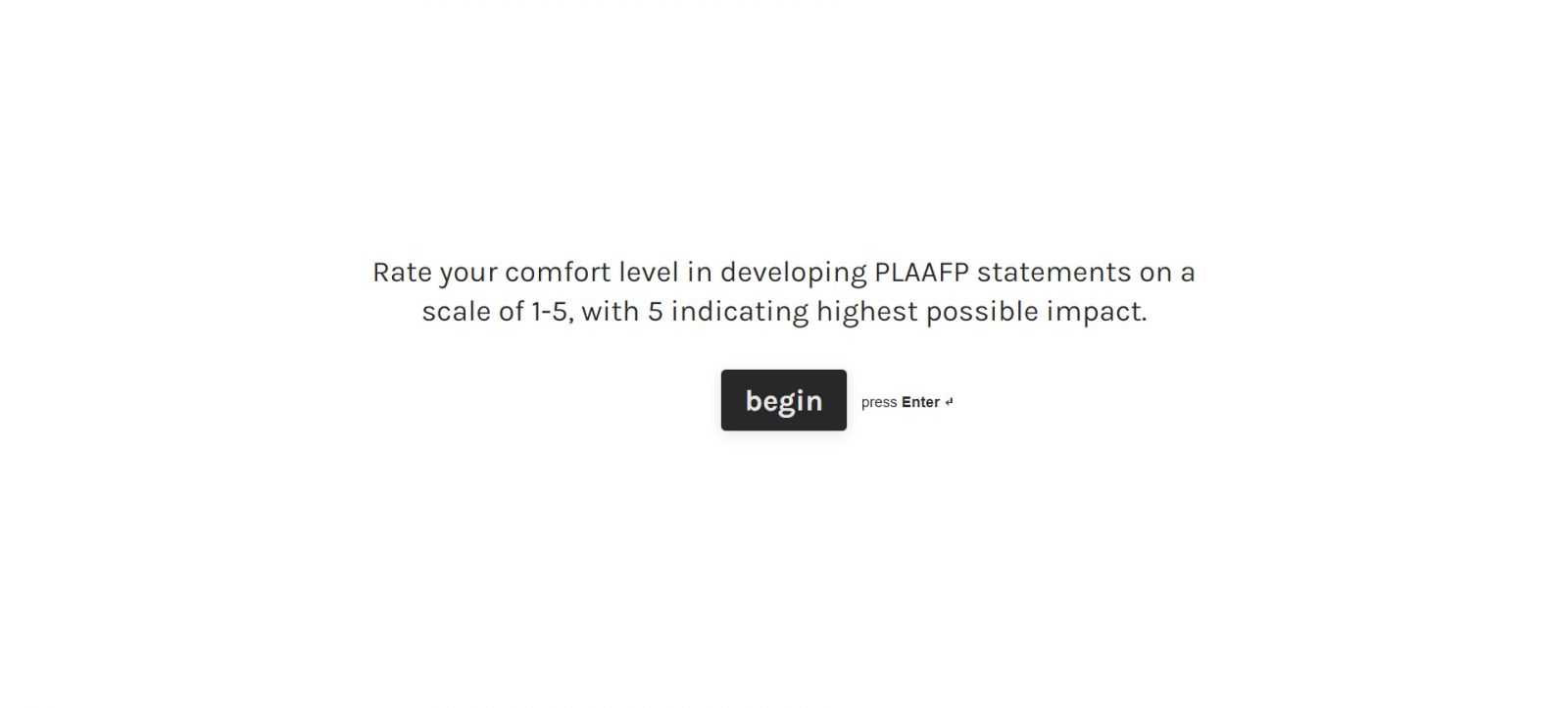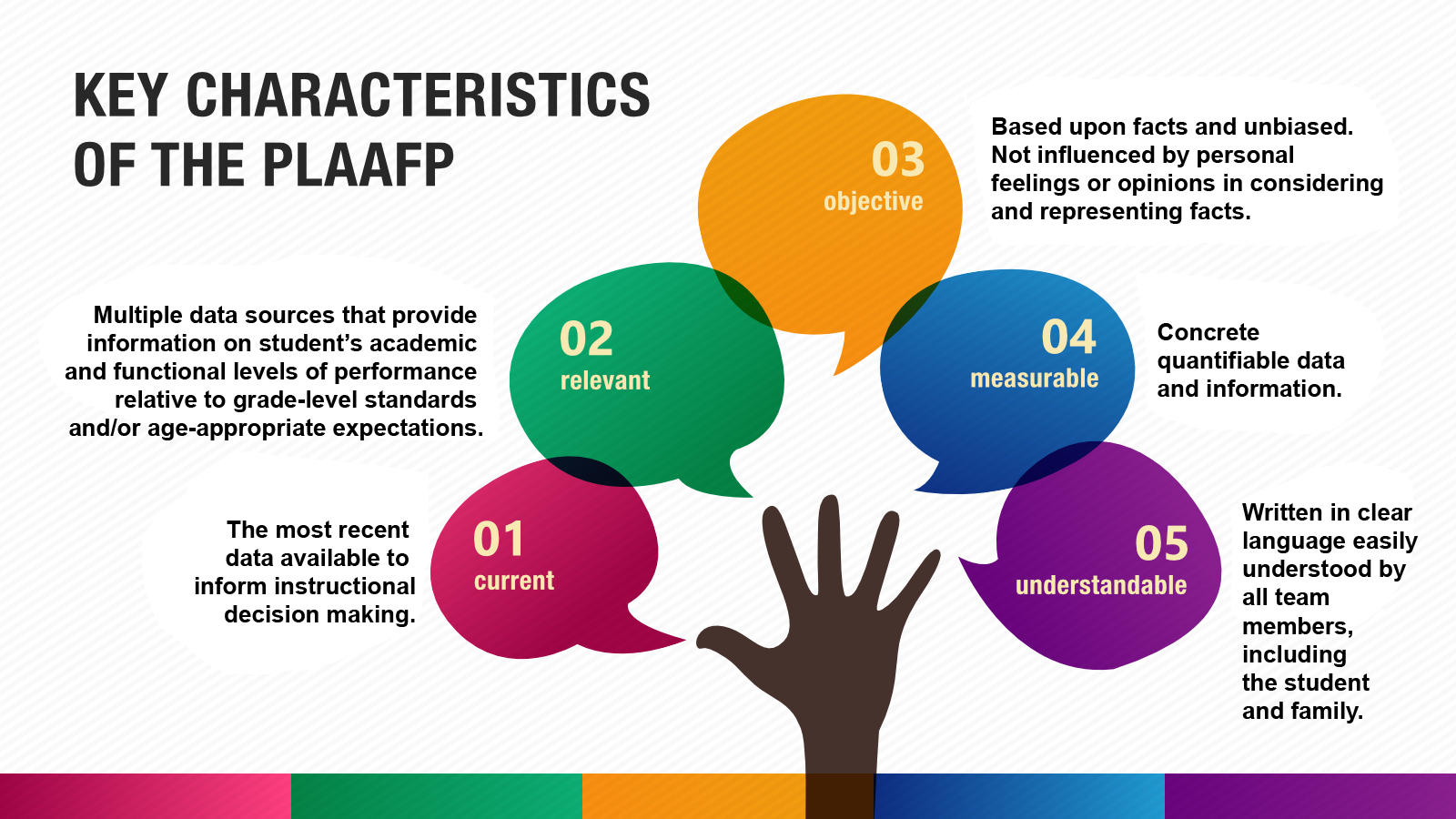01: Present Levels of Academic Achievement and Functional Performance (PLAAFP)
Presentation
In this module, we will explore information about the components of an effective Present Levels of Academic Achievement and Functional Performance (PLAAFP) statement. Review the following video to learn more:
While you are viewing this module, think about:
- What is the purpose for writing an effective PLAAFP?
- What are the key characteristics of a thorough and informative PLAAFP to support the development of an effective standards-aligned IEP?
Purpose of the PLAAFP
Creating a thorough PLAAFP is a crucial step in the collaborative development of a student’s specially designed instruction (SDI) and a critical role of the IEP team. The PLAAFP:
- Describes the unique strengths and needs of the student;
- Provides information from multiple sources about the student’s learning characteristics, current skills, and instructional history; and
- Identifies the impact of the disability on participation in the general curriculum in order to allow the team to make decisions about goals and objectives, instruction and intervention, accommodations, supplementary aids and services, program modifications, supports to personnel, and services that address the student’s unique needs.
Think about the PLAAFP statements that you have written in the past. What impact do they have on the development of the final standards-aligned IEP? Let's have a poll and see how educators view the impact of their PLAAFP statements on standards-aligned IEP.

Key characteristics of the PLAAFP
Now, let's take a moment to review each of the five key characteristics of the PLAAFP:

Six major steps in the development of the PLAAFP
Now that you have learned about the key characteristics of the PLAAFP, let’s explore the six major steps necessary for high quality PLAAFP development. Select each of the following steps to review the information for the step.
Common errors in writing an effective PLAAFP
As we continue to learn more about the PLAAFP, let's be mindful of the following common errors when writing the PLAAFP:
- Lack of input from family or guardian
- Overreliance on test scores from the initial and triennial evaluation
- Omitting student strengths, functional, and/or behavioral information
- Not considering student performance in light of grade-level standards and/or age-appropriate expectations
- Absence of student appropriate baseline, assessment data, historical progress, and rate of growth information
- Re-stating the diagnosis instead of describing how and why the characteristics impact access to learning
- Vague descriptions on how the disability affects involvement and progress in the general education curriculum
- Using jargon or vocabulary that is not easily understood

